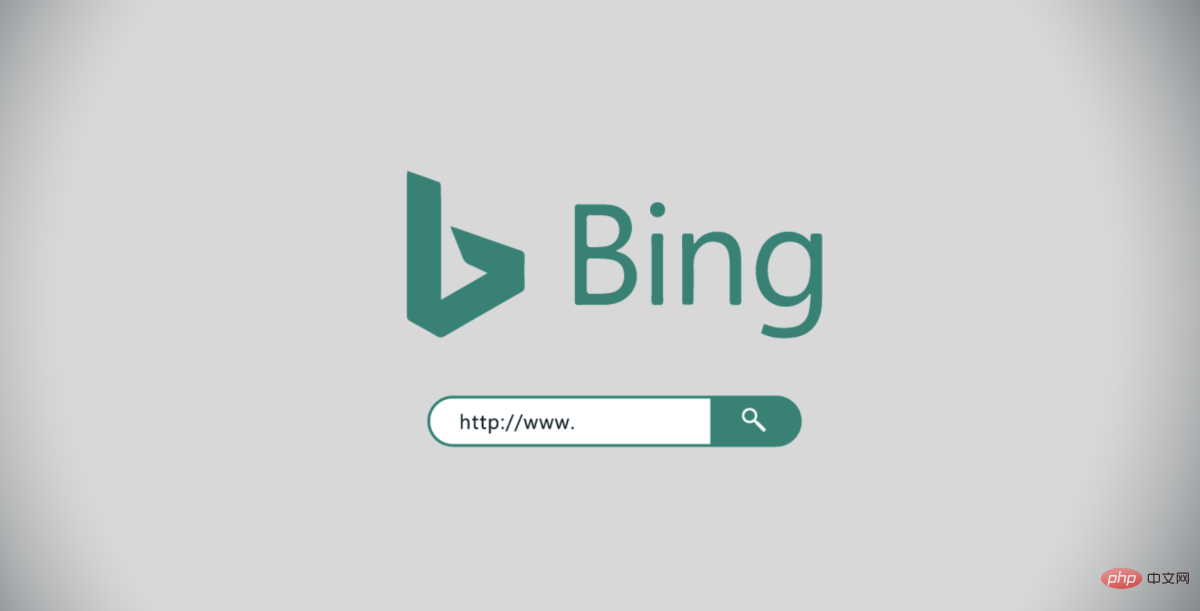 Technology peripherals
Technology peripherals AI
AI Dynamic integration: exploring the trend of combining artificial intelligence and the Internet of Things (1)
Dynamic integration: exploring the trend of combining artificial intelligence and the Internet of Things (1)The convergence of artificial intelligence and the Internet of Things brings a new dimension of efficiency, automation and intelligence to our daily lives. At the same time, artificial intelligence has revolutionized the way machines learn, reason, and make decisions. When the two are combined, artificial intelligence in the Internet of Things opens up a new realm of possibilities, enabling intelligent, autonomous systems to analyze large amounts of data and act on their insights

The Internet of Things is a network of interconnected physical devices, vehicles, appliances and other objects embedded with sensors, software and network connections. These devices collect and exchange data, creating a vast ecosystem that connects the physical and digital worlds. Artificial intelligence is achieved by simulating human intelligence in machines that are programmed to think and learn like humans
By leveraging advanced algorithms and machine learning technology, IoT devices are able to analyze and interpret in real time data to enable informed decisions and autonomous actions. This combination enables IoT devices to adapt to changing environments, optimize their operations, and provide users with personalized experiences
It is entirely reasonable to emphasize the importance of artificial intelligence in the Internet of Things. It has huge potential to bring unprecedented opportunities in various fields such as healthcare, transportation, manufacturing, agriculture and smart cities. By fully leveraging the power of artificial intelligence in the Internet of Things, we can build intelligent ecosystems that enable devices to seamlessly communicate, collaborate, and make informed choices to improve our lives.
Artificial Intelligence and The Intersection of IoT
The combination of artificial intelligence (AI) and IoT creates a powerful alliance, pushing the capabilities of IoT devices to new heights. Let’s explore the fascinating intersection of these two technologies and learn how artificial intelligence can enhance the capabilities of the Internet of Things
1. The relationship between artificial intelligence and the Internet of Things
The Internet of Things is centered around connecting physical objects and enable it to collect and share data. Artificial intelligence, on the other hand, focuses on creating intelligent systems that can learn, reason, and make decisions. When AI merges with IoT, we can see the synergy of AI providing advanced analytics, automation, and intelligent decision-making to IoT devices
By combining AI with IoT, devices can Interpret and analyze large amounts of data collected from sensors and other sources. This enables devices to extract valuable information, recognize patterns and make informed decisions in real time. Artificial intelligence algorithms can discover hidden correlations in IoT data, enabling predictive analysis and proactive actions
2. How does artificial intelligence enhance the capabilities of IoT devices?
The following is the improvement of artificial intelligence Some ways IoT devices function:
Advanced Data Analysis
Artificial intelligence algorithms can process and analyze the vast amounts of data generated by IoT. By leveraging technologies such as machine learning and deep learning, IoT devices can identify trends, anomalies, and patterns in data. This analysis provides valuable insights into optimizing processes, predicting maintenance needs, and detecting potential risks or failures
INTELLIGENT AUTOMATION
Artificial intelligence enables IoT devices to intelligently automate tasks and processes. By learning historical data and user behavior, IoT devices can automate daily operations, adjust settings, and optimize energy consumption. For example, a smart thermostat can learn an occupant’s temperature preferences and adjust heating or cooling accordingly, enabling energy savings and personalized comfort
real-time decision-making
Through artificial intelligence technology, things can Connected devices can make decisions in real time based on collected and analyzed data. This allows the device to respond quickly to changing conditions or events. For example, in smart grid systems, artificial intelligence algorithms can analyze power usage patterns and adjust power distribution to ensure efficient use and prevent power outages
3. Practical applications of artificial intelligence in the Internet of Things
Here are some examples that demonstrate the integration of AI and IoT spurring numerous practical applications across industries
Smart Healthcare
IoT devices powered by AI enable remote monitoring patient's condition, provide personalized healthcare advice and detect health problems early. Wearable devices equipped with sensors and artificial intelligence algorithms can continuously monitor vital signs, detect abnormalities and alert healthcare providers in emergencies The Internet of Things plays a very important role in the development of self-driving cars. These vehicles rely on artificial intelligence algorithms to interpret sensor data, make instant decisions and navigate complex road conditions. The convergence of artificial intelligence and the Internet of Things enables self-driving cars to optimize routes, avoid collisions and improve passenger safety
INDUSTRIAL AUTOMATION
Artificial intelligence in the Internet of Things is revolutionizing industrial processes by enabling predictive maintenance, optimizing supply chains and improving operational efficiency. IoT devices equipped with artificial intelligence algorithms can monitor machine performance, detect potential failures and schedule maintenance activities before failure occurs. This proactive approach minimizes downtime and reduces maintenance costs
IV. Benefits of Artificial Intelligence in the Internet of Things
The integration of artificial intelligence and the Internet of Things brings many benefits, Revolutionizing the way we interact with technology and the world around us. Let’s delve deeper into the benefits of incorporating artificial intelligence into IoT systems
Improved data analysis and decision-making
One of the notable benefits of artificial intelligence in IoT is its ability to analyze Huge amounts of data and extract meaningful insights. By using artificial intelligence algorithms, IoT devices can process and interpret data in real-time, enabling accurate decision-making and actionable intelligence. Here are some of the key benefits:
Augmented Predictive Analytics
With AI-powered IoT devices, future outcomes and behaviors can be predicted based on historical data patterns. Using machine learning and predictive modeling, IoT systems can predict maintenance needs, optimize resource allocation, and predict customer preferences. This proactive approach enables organizations to make informed decisions, improve operational efficiency, and deliver a better customer experience
Real-time monitoring and alerting
Through artificial intelligence algorithms, IoT devices can Monitor key parameters in real time and trigger alerts. For example, in a smart home security system, AI-powered cameras can detect unusual activity or intrusions and immediately notify the homeowner or security personnel. This real-time monitoring improves security and enables rapid response to potential threats
Situational Decision-making
The application of artificial intelligence in IoT enables devices to make situational decisions based on a deep understanding of the environment. For example, in smart city applications, AI-driven traffic management systems can analyze real-time traffic data, weather conditions and historical patterns to optimize traffic flow and reduce congestion. This increases traffic efficiency and reduces commuter travel time
The above is the detailed content of Dynamic integration: exploring the trend of combining artificial intelligence and the Internet of Things (1). For more information, please follow other related articles on the PHP Chinese website!
 2023年机器学习的十大概念和技术Apr 04, 2023 pm 12:30 PM
2023年机器学习的十大概念和技术Apr 04, 2023 pm 12:30 PM机器学习是一个不断发展的学科,一直在创造新的想法和技术。本文罗列了2023年机器学习的十大概念和技术。 本文罗列了2023年机器学习的十大概念和技术。2023年机器学习的十大概念和技术是一个教计算机从数据中学习的过程,无需明确的编程。机器学习是一个不断发展的学科,一直在创造新的想法和技术。为了保持领先,数据科学家应该关注其中一些网站,以跟上最新的发展。这将有助于了解机器学习中的技术如何在实践中使用,并为自己的业务或工作领域中的可能应用提供想法。2023年机器学习的十大概念和技术:1. 深度神经网
 人工智能自动获取知识和技能,实现自我完善的过程是什么Aug 24, 2022 am 11:57 AM
人工智能自动获取知识和技能,实现自我完善的过程是什么Aug 24, 2022 am 11:57 AM实现自我完善的过程是“机器学习”。机器学习是人工智能核心,是使计算机具有智能的根本途径;它使计算机能模拟人的学习行为,自动地通过学习来获取知识和技能,不断改善性能,实现自我完善。机器学习主要研究三方面问题:1、学习机理,人类获取知识、技能和抽象概念的天赋能力;2、学习方法,对生物学习机理进行简化的基础上,用计算的方法进行再现;3、学习系统,能够在一定程度上实现机器学习的系统。
 超参数优化比较之网格搜索、随机搜索和贝叶斯优化Apr 04, 2023 pm 12:05 PM
超参数优化比较之网格搜索、随机搜索和贝叶斯优化Apr 04, 2023 pm 12:05 PM本文将详细介绍用来提高机器学习效果的最常见的超参数优化方法。 译者 | 朱先忠审校 | 孙淑娟简介通常,在尝试改进机器学习模型时,人们首先想到的解决方案是添加更多的训练数据。额外的数据通常是有帮助(在某些情况下除外)的,但生成高质量的数据可能非常昂贵。通过使用现有数据获得最佳模型性能,超参数优化可以节省我们的时间和资源。顾名思义,超参数优化是为机器学习模型确定最佳超参数组合以满足优化函数(即,给定研究中的数据集,最大化模型的性能)的过程。换句话说,每个模型都会提供多个有关选项的调整“按钮
 得益于OpenAI技术,微软必应的搜索流量超过谷歌Mar 31, 2023 pm 10:38 PM
得益于OpenAI技术,微软必应的搜索流量超过谷歌Mar 31, 2023 pm 10:38 PM截至3月20日的数据显示,自微软2月7日推出其人工智能版本以来,必应搜索引擎的页面访问量增加了15.8%,而Alphabet旗下的谷歌搜索引擎则下降了近1%。 3月23日消息,外媒报道称,分析公司Similarweb的数据显示,在整合了OpenAI的技术后,微软旗下的必应在页面访问量方面实现了更多的增长。截至3月20日的数据显示,自微软2月7日推出其人工智能版本以来,必应搜索引擎的页面访问量增加了15.8%,而Alphabet旗下的谷歌搜索引擎则下降了近1%。这些数据是微软在与谷歌争夺生
 荣耀的人工智能助手叫什么名字Sep 06, 2022 pm 03:31 PM
荣耀的人工智能助手叫什么名字Sep 06, 2022 pm 03:31 PM荣耀的人工智能助手叫“YOYO”,也即悠悠;YOYO除了能够实现语音操控等基本功能之外,还拥有智慧视觉、智慧识屏、情景智能、智慧搜索等功能,可以在系统设置页面中的智慧助手里进行相关的设置。
 人工智能在教育领域的应用主要有哪些Dec 14, 2020 pm 05:08 PM
人工智能在教育领域的应用主要有哪些Dec 14, 2020 pm 05:08 PM人工智能在教育领域的应用主要有个性化学习、虚拟导师、教育机器人和场景式教育。人工智能在教育领域的应用目前还处于早期探索阶段,但是潜力却是巨大的。
 30行Python代码就可以调用ChatGPT API总结论文的主要内容Apr 04, 2023 pm 12:05 PM
30行Python代码就可以调用ChatGPT API总结论文的主要内容Apr 04, 2023 pm 12:05 PM阅读论文可以说是我们的日常工作之一,论文的数量太多,我们如何快速阅读归纳呢?自从ChatGPT出现以后,有很多阅读论文的服务可以使用。其实使用ChatGPT API非常简单,我们只用30行python代码就可以在本地搭建一个自己的应用。 阅读论文可以说是我们的日常工作之一,论文的数量太多,我们如何快速阅读归纳呢?自从ChatGPT出现以后,有很多阅读论文的服务可以使用。其实使用ChatGPT API非常简单,我们只用30行python代码就可以在本地搭建一个自己的应用。使用 Python 和 C
 人工智能在生活中的应用有哪些Jul 20, 2022 pm 04:47 PM
人工智能在生活中的应用有哪些Jul 20, 2022 pm 04:47 PM人工智能在生活中的应用有:1、虚拟个人助理,使用者可通过声控、文字输入的方式,来完成一些日常生活的小事;2、语音评测,利用云计算技术,将自动口语评测服务放在云端,并开放API接口供客户远程使用;3、无人汽车,主要依靠车内的以计算机系统为主的智能驾驶仪来实现无人驾驶的目标;4、天气预测,通过手机GPRS系统,定位到用户所处的位置,在利用算法,对覆盖全国的雷达图进行数据分析并预测。


Hot AI Tools

Undresser.AI Undress
AI-powered app for creating realistic nude photos

AI Clothes Remover
Online AI tool for removing clothes from photos.

Undress AI Tool
Undress images for free

Clothoff.io
AI clothes remover

AI Hentai Generator
Generate AI Hentai for free.

Hot Article

Hot Tools

EditPlus Chinese cracked version
Small size, syntax highlighting, does not support code prompt function

Safe Exam Browser
Safe Exam Browser is a secure browser environment for taking online exams securely. This software turns any computer into a secure workstation. It controls access to any utility and prevents students from using unauthorized resources.

MantisBT
Mantis is an easy-to-deploy web-based defect tracking tool designed to aid in product defect tracking. It requires PHP, MySQL and a web server. Check out our demo and hosting services.

SublimeText3 English version
Recommended: Win version, supports code prompts!

SublimeText3 Mac version
God-level code editing software (SublimeText3)






